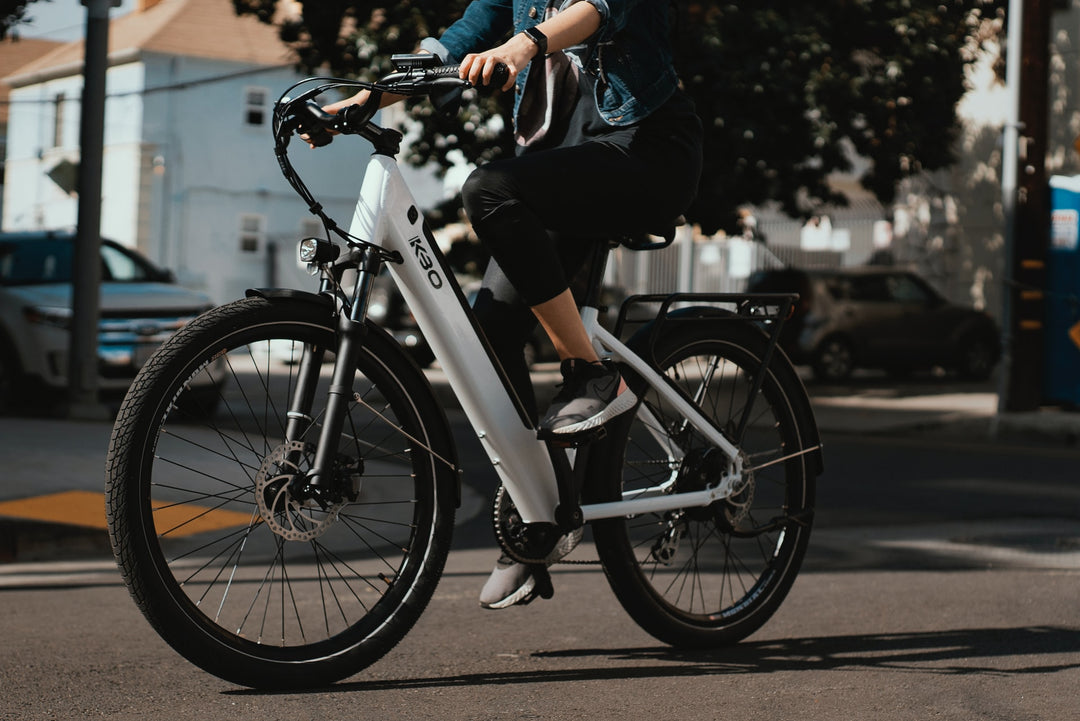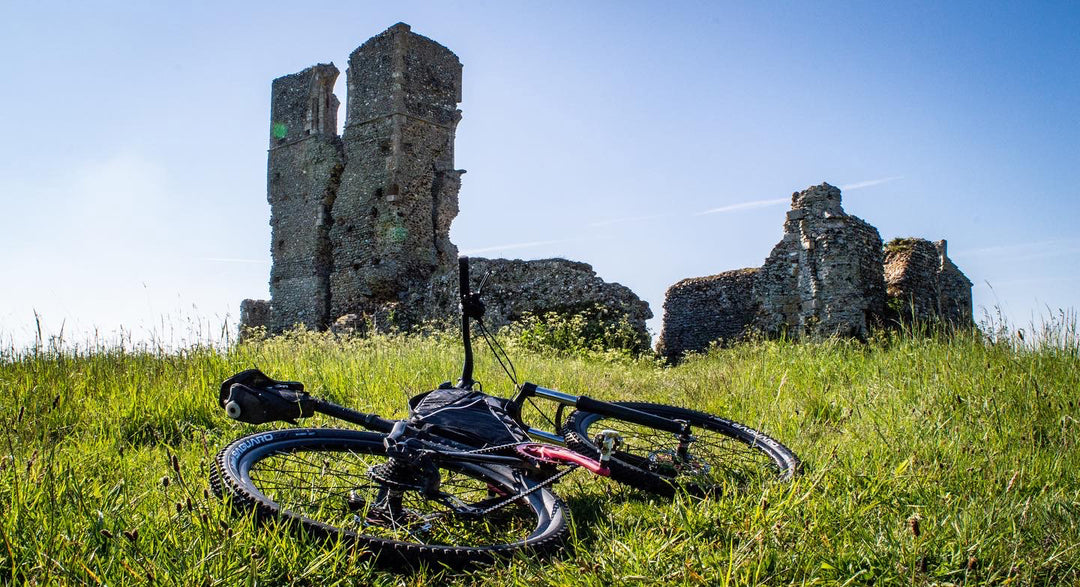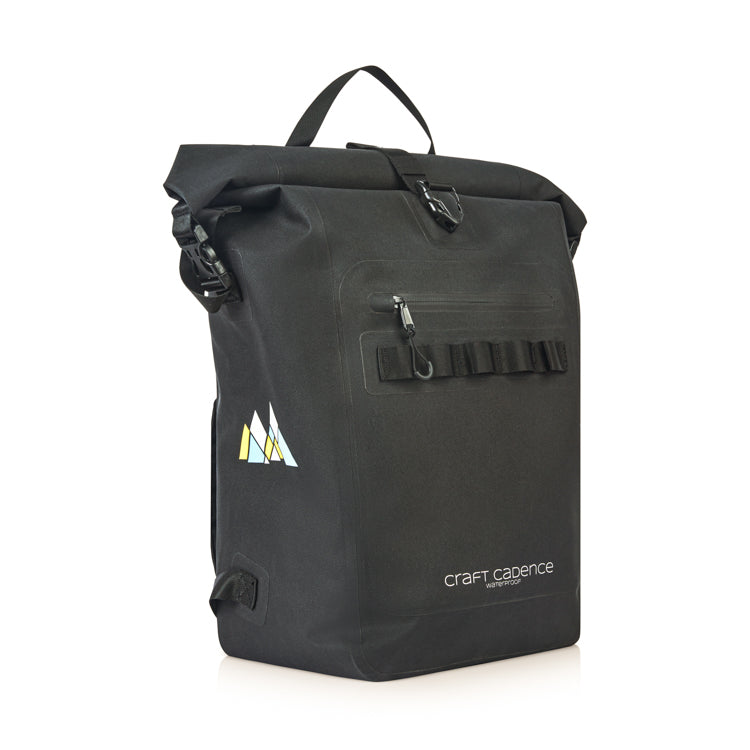What makes a cycling backpack waterproof? An insider's look into waterproofing techniques
If you have ever been impressed by the waterproofing features of a backpack, then chances are you have relied on a technology called plastic welding, whether you realised it or not.
This is because only welded backpacks can 100% guarantee absolute waterproofness, through technologies such as high-frequency and thermal welding.
So what exactly is welding and how does it ensure waterproofing compared to stitched backpacks? Let's find out.
Waterproofing of stitched backpacks
While stitched backpacks can have reasonable levels of water resistance, it cannot ensure 100% waterproofing. This is because the process of stitching material together creates thousands of tiny holes, which compromises the waterproof ability of the bag. There are also holes at zipper ends which allow water to trickle in.
To work around this, manufacturers typically provide a waterproof seal behind the stitching, or place waterproof 'covers' at zipper ends. This will make the bag water repellent from light showers but water can still enter under prolonged deluges or if the bag is submerged under water.
Waterproofing of welded backpacks
It is therefore of no surprise that the highest quality waterproof backpacks in the market are not stitched, and alternative methods to seal the bag - most commonly through a roll top enclosure.
The exact welding techniques applied depend manufacturer by manufacturer - who own and produce in their own factories and keep their processes under rap. However, in general the highest quality backpacks use the process called High-Frequency or Radio Frequency Welding.
What is (HF) high-frequency or RF (radio frequency) welding?
Radio frequency welding or (high-frequency welding) is the process of bonding materials using electromagnetic energy (13 to 100 MHz). While the principle is technically the same as welding metals. High-frequency welding works on the same principle.
The process of welding includes two electrodes creating an oscillating electric field that begins to shift and move polar molecules within each material, in order to orient themselves in accordance with the electromagnetic field.
The movement of these molecules releases energy in the form of heat. When enough energy is applied, the molecules begin to melt and bond to one another. The weld is then completed by applying pressure to the bonded area, ensuring a successful seal.
Essentially, through the high-frequency welded process - the entire bag is effectively shaped from one piece of fabrics, seamlessly joined without any gaps or holes in between.
Trade-offs between stitched and welded backpacks
As mentioned stitched backpacks will usually provide more pockets and compartments with easier access through zippers. That tends to be prohibitively costly for welded backpacks as each new pocket or compartment needs a new mould to be welded to ensure 100% waterproofing.For this reason, welded bags typically seem simpler to that of its stitched bags (fewer compartments, pockets, etc).
This does however ensure 100% waterproofing. The welding techniques tends to create a stronger bond between materials. This means seals are less likely to peel, crack or deteriorate over time to that of a stitched backpack.
If waterproofing is a must for your requirements, then choosing a welded backpack is a no brainer.
The next question is, how do you choose between different manufacturers that all claim waterproofing? The key is to look for manufacturers that have actually tested the waterproofing capabilities of their bags with certified IPX ratings, as well as the welding processes and techniques that are applied.
Signs of a well crafted welded bag
Many factors of the process can affect the strength and seal quality of the weld. Weld thickness, tooling layout, and machine control are many of the factors that can create a good waterproof seal.
Look for manufacturers that are confident enough to give multi-year warranties to their products. Also look for manufacturers that have been well tested in the cycling communities through reviews and in-depth testing. A quick Youtube search should show a number of results and give extra insights.
Materials used with HF welding
The materials used for welded bags also tend to be stiffer and tear resistant, and made from waterproof tarpaulin materials such as PVC and TPU.The material is usually reinforced or coated and can be colored, patterned or simply plain.
We have a separate blogpost where we dive into details on the merits of each of the most common materials for seam welded backpacks, so definitely check that out.
Conclusion
Stitched bags are great for starting out in cycling and for fair weather conditions as they provide convenience and easy access to essentials.
If waterproofing is a primary concern, then welded bags are the obvious choice for your cycling needs. While welded bags tends to come at a premium cost compared to stitched bags, it is the best available technique currently on the market to ensure waterproofing.



